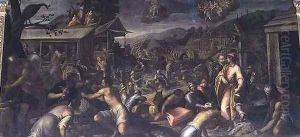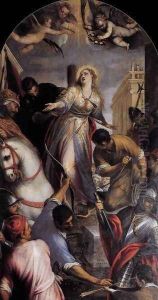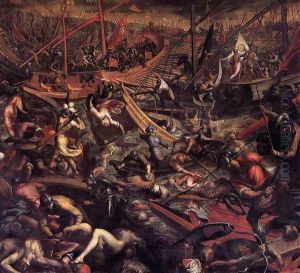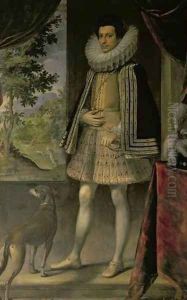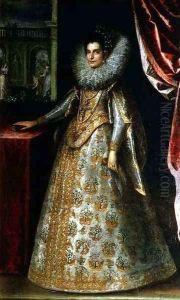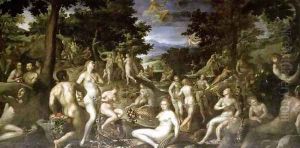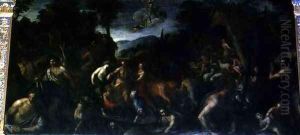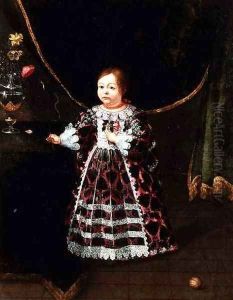Sante Peranda Paintings
Sante Peranda, born in 1566 in Murano, a series of islands linked by bridges in the Venetian Lagoon, was an Italian painter of the late-Renaissance and early-Baroque periods. His life and career were deeply intertwined with the artistic currents flowing through Venice during a time of significant cultural and artistic ferment. Peranda’s work is characterized by its dynamic compositions, vibrant color palette, and the emotional intensity of its figures, qualities that align him with the broader movements of Venetian painting in his era.
After initial training in his native Venice, Peranda’s artistic journey took a significant turn when he traveled to Rome. There, he was exposed to the works of Caravaggio and the Carracci brothers, among others, whose dramatic use of light and shadow, as well as their commitment to realism and emotional expressiveness, had a profound impact on his style. Upon returning to Venice, he blended these influences with the rich colorism and atmospheric effects typical of the Venetian school, creating a distinct style that was both deeply personal and reflective of the broader trends in Italian art at the time.
Throughout his career, Peranda received commissions from some of the most prestigious institutions and individuals in Venice, including the Doge’s Palace and various churches and scuole (religious confraternities). His religious paintings, in particular, are noted for their ability to convey complex theological ideas through accessible, emotionally resonant imagery. Moreover, his portraits and mythological subjects reveal an artist capable of capturing the subtleties of human emotion and the nuances of physical presence with remarkable sensitivity.
Peranda’s legacy is that of a bridge between the Renaissance and Baroque periods in Italian art. His works reflect the transition from the balanced compositions and idealized forms of the High Renaissance to the more dynamic, expressive, and sometimes dramatic approaches that characterized the Baroque. Though perhaps not as widely recognized as some of his contemporaries, Peranda’s contributions to the Venetian artistic landscape were significant. He not only participated in the evolution of Venetian painting but also helped to disseminate the stylistic innovations of his time across Italy and beyond. Sante Peranda died in 1638 in Venice, leaving behind a body of work that continues to be appreciated for its beauty, emotional depth, and historical significance.
